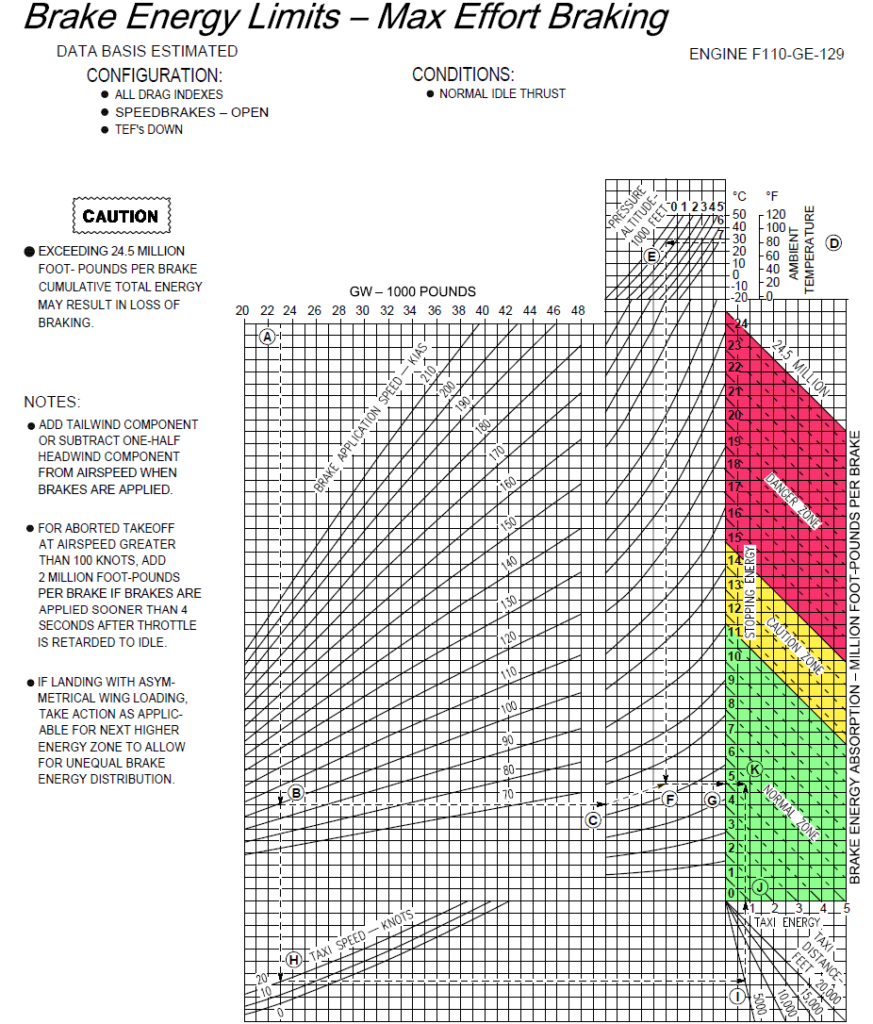Ever do any silly landings on the highway strips in F4? You probably had to slam on the brakes just about immediately in order to stop. Well, you’re not a C-17 doing an assault landing on 3500 feet of runway…Those days are over!
BMS now features modelization of the real F-16 brake energy limits. The limits are based on gross weight, temperature, pressure altitude and airspeed at which an abort (on takeoff roll) or braking on landing was initiated. It assumes idle thrust, maximum braking, speedbrakes are open, TEFs are down and applies to all drag indexes. It is now possible to experience:
• Blowing tire fuse plugs – tire(s) go flat which causes much more longitudinal friction and less lateral friction. Fusible plugs in aircraft tires are designed to melt at specific temperatures to relieve tire pressure and thus keep them from exploding.
• Brake hydraulic pressure line failures – brake reaction is reduced or lost completely.
• Main gear tire fire, hydraulic fluid fire, exploding tires & gear failure – the affected gear fails completely.
The four zones are modeled on a per-brake basis based on the following chart:
Zone 1 : Green: Normal zone – 0-11.5 million ft-lbs, nothing happens
Zone 2: Yellow: Caution zone – 11.5-15 million ft-lbs, 30% chance something bad happens
Zone 3 : Red: Danger zone – 15-24.5 million ft-lbs, 90% chance something bad happens
Zone 4 : Over 24.5 million lbs: Danger zone + immediate braking failure
It takes 5 – 9 minutes (random) for the brake energy / heat to build up after braking. During this time period is when one of the following problems can occur as described above, based on how much energy was built up. Brake energy is also continually monitored and built up during taxiing (when the brakes are applied obviously). Build up from taxiing is at its greatest with low gross weights and long taxis because the brakes must be used more often in order to control taxi speed. Taxiing with a gross weight of 20,000 lbs at 10 knots over a distance of 20,000 ft yields ~4.3 million ft-lbs of energy absorbed per brake. Heavier weight and increased speed uses less energy over the same distance (speed within reason of course). Heat and energy also dissipate over time. A rejected (aborted) takeoff with maximum braking followed by another rejected takeoff will likely put the aircraft in the danger zone or worse (all depending on the a/c gross weight, speed at which the brakes were applied, etc.).
Related to this feature is the way the aircraft is taxied – this has been made more realistic. Like most aircraft, the aircraft may have enough thrust at idle power to start rolling (and accelerate), depending on gross weight. Therefore, unless the pilot holds the brakes or sets the parking brake, the aircraft will start rolling (again, depending on gross weight). If the aircraft is heavy enough, some thrust must be applied to start moving, and then idle thrust should be sufficient to keep the aircraft moving. Real world F-16 taxi and braking technique now applies which is:
Taxi speed in clear areas should not exceed 25 knots. To reduce tire wear, slow to
10 knots when making sharp turns. Do not ride the brakes. Correct braking technique allows
taxi speed to increase to approximately 25 knots, and then apply moderate braking to slow to
15 knots. Release the brakes, allow the speed to increase back to 25 knots and repeat the
process. Ground speed is available on the INS page (List 6).


